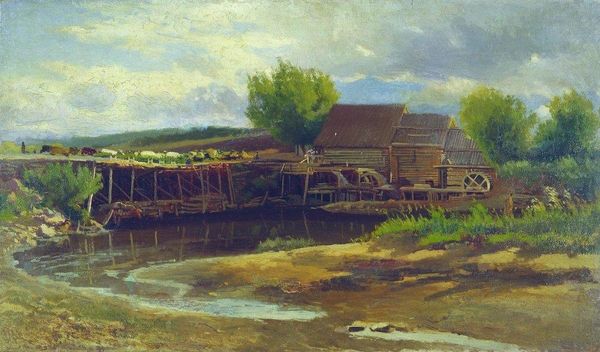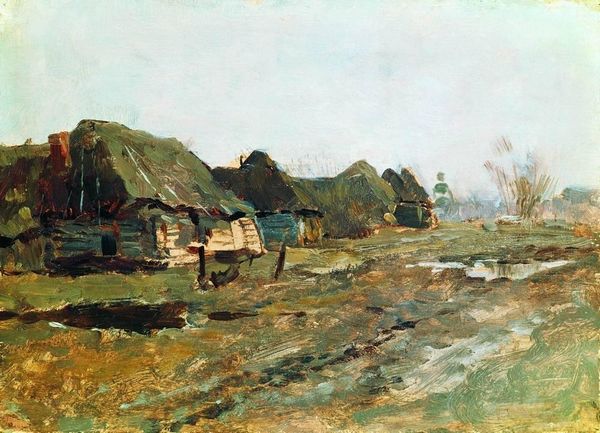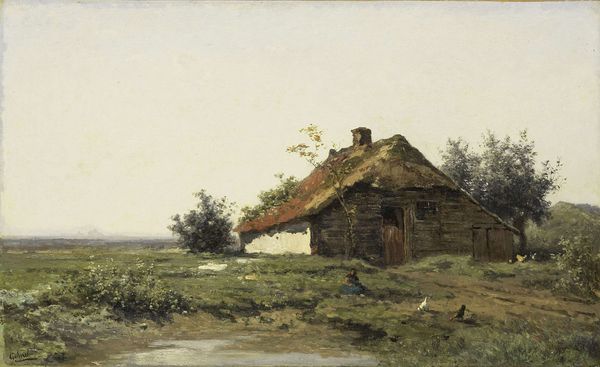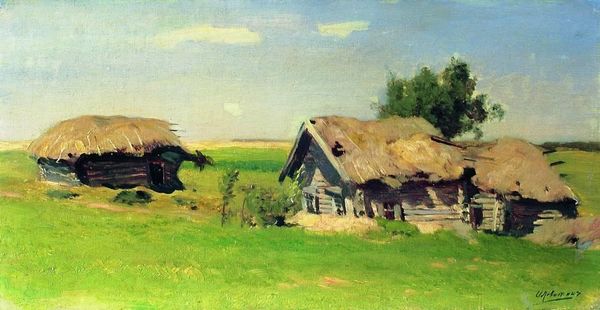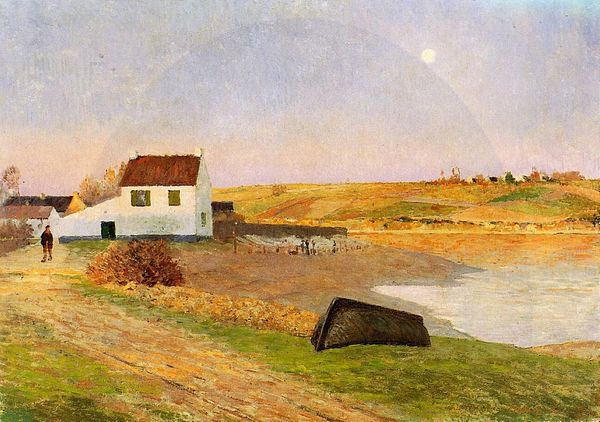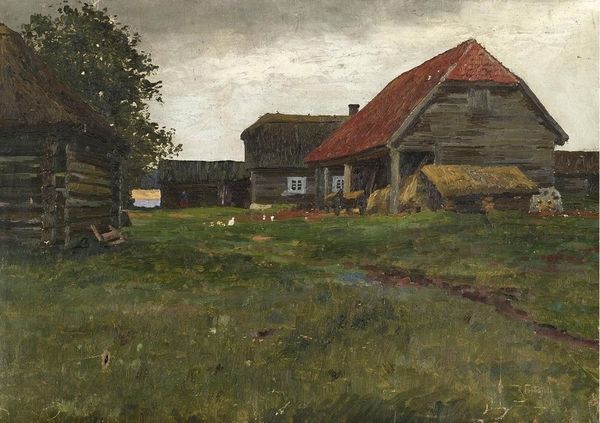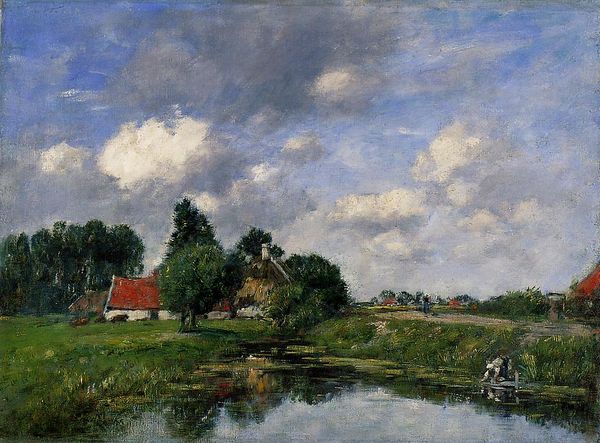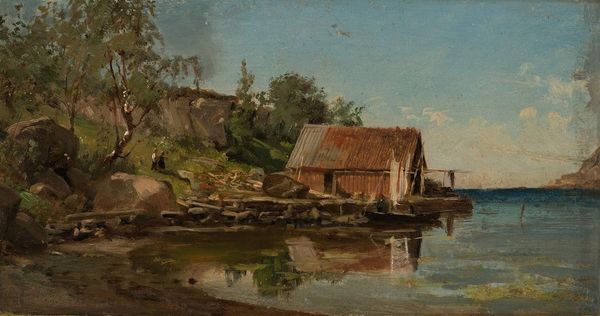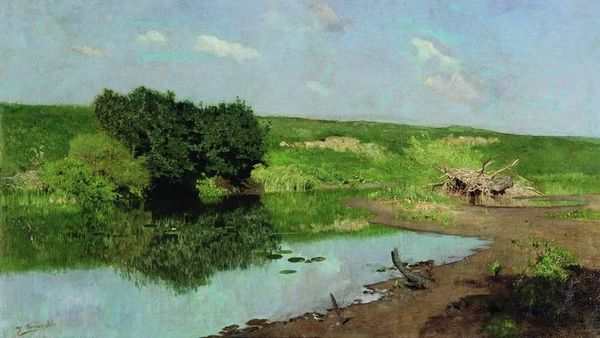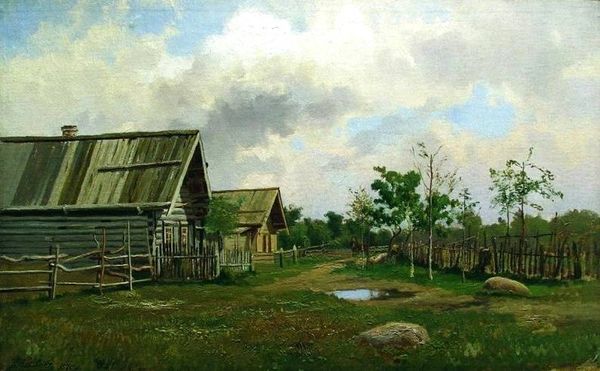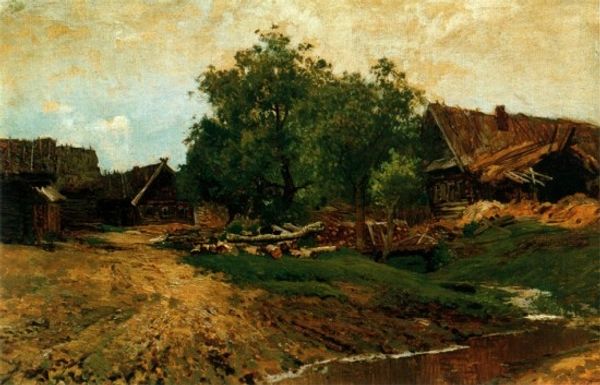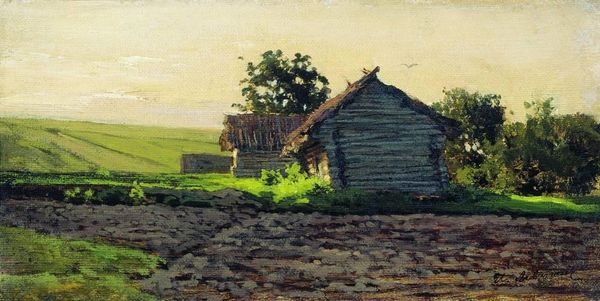
Copyright: Public domain
Curator: What strikes me first about this piece is the tranquility; there's a real stillness conveyed. Editor: That's certainly the feeling. We are looking at "Summer Day," painted in 1870 by Konstantin Egorovich Makovsky. Makovsky's handling of light, the almost muted palette, does lend it a peaceful, perhaps even melancholy air. But is there something more complex in its representation? Curator: Absolutely. Considering this work emerged during a period of social reform in Russia, I see beyond a simple landscape. The dilapidated structure, the lack of figures actively working... I read that as a subtle commentary on the conditions of rural life at the time. Who exactly lives in such a dwelling? What socioeconomic implications are apparent to a society in great transition? Editor: That's a potent interpretation. We know that artists like Makovsky were deeply affected by social inequalities. Yet, this canvas seems, at least on the surface, devoid of any explicitly political messaging. What would lead us to that idea of socioeconomic factors? Curator: It's in the quiet subversion, the understated reality. Instead of glorifying pastoral life, as was the convention, he shows the harsh reality, maybe for the marginalized peasants, using very natural colors. That building isn't quaint, it’s collapsing. This raises a discourse on how the landscape, often seen as neutral, can reflect larger narratives of power and marginalization. And what about how women experienced these conditions? We should question that as well. Editor: I can agree that the context certainly enriches our reading of this work. It reminds us that these landscapes are never purely aesthetic exercises. How do you feel about the style itself? Do you feel that the realism helps create or enhance the socioeconomic factors involved here? Curator: Definitely! Realism’s truth-telling approach, moving away from idealized Romantic depictions, further emphasizes the authentic representation of rural life, encouraging the observer to ponder questions surrounding social disparity. In the depiction of something unglamorous is a certain truth to its conditions. It can almost be thought of as proto-impressionistic, as that movement later grew and expanded the realist view into a personal, emotional interpretation of how color, light, and society come together. Editor: Very well-said, I appreciate your approach to “Summer Day”. It’s essential to remember the layers of social and historical context that informs how we see the landscapes. Curator: Thank you. For me, it’s also an encouragement to seek narratives in every stroke, in every tone of rural settings, beyond just pastoral simplicity.
Comments
No comments
Be the first to comment and join the conversation on the ultimate creative platform.
